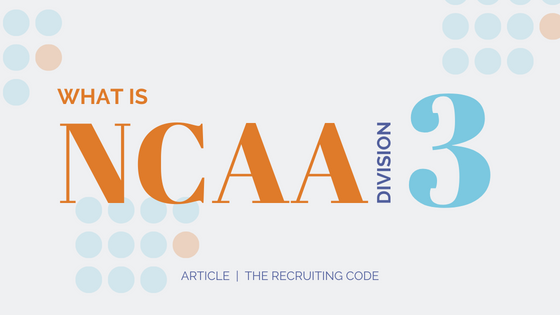NCAA Division 3
NCAA Division 3 is made up of 439 schools. They make up approximately 40% of all NCAA institutions. 81% are private and 19% are public. The average size of Division 3 schools is 2,600. They range in size from a few hundred students to over 21,000.
In 1973 a split occurred in Division 2 membership. A large number of schools decided to form their own entity, forming Division 3. The distinctive for which they split was to form a division without athletic scholarships.
Scholarships
NCAA Division 3 is quite different than the other two NCAA divisions. There are no athletic scholarships in Division 3. Nobody, not even the very best athletes, get athletic scholarships. I repeated that twice because many people miss it. Does this mean these schools are unaffordable and the talent is low? Not at all. Higher education is not about how much athletic scholarship money a school offers you, but about how much you end up paying. Many schools at each division have extensive student aid.
Competition
Are you concerned that if you played in Division 3 you would be surrounded by untalented athletes? There are Division 3 programs that have incredible talent. You can find many athletes who could have gone Division 1 or 2, yet decided that a Division 3 school would be a great fit. The answer is determined by the quality of the school’s team, not by its Division.
Another special aspect of Division 3 is that you know every athlete on the field, both your team and your opponents, are there because they love the sport. There are no athletic scholarships inducing someone to be out there. The top Division 3 teams are loaded with talent and could compete with many Division 1 and 2 teams. Athletes can leave at any time and still afford their education. The commitment level is surprisingly high considering there is no financial incentive to play.
Out of Season Requirements
Off-season is lengthy in Division 3, which can be a wonderful thing for many athletes. During the traditional season (the regular season), sport commitment and time is much the same as it is with the Division 1 and 2 schools. It is in the off-season and the non-traditional seasons that major differences occur.
The non-traditional season lasts approximately five weeks and entitles the team to one date of competition. Within the 5 weeks, teams are allowed 15 practice dates. Do the math and you will see that during the non-traditional season, you are practicing only three times per week. The rest of the year is the off-season.
During the offseason, coaches are not allowed to conduct practices, weight training, or anything associated with the sport. The coach may give individuals a voluntary workout schedule. Most Division 3 coaches expect their athletes and teams to be working out and playing during the off-season, but they cannot lead these sessions or make them mandatory. In reality, this plays out very differently at each school. This is a great question to have answered during the recruiting process. Ask the coach, and separately ask the players.
Academics
Academics are often a major factor for student-athletes who choose to go to a Division 3 school. Athletes at Division 3 schools are able to focus on their academics, take a rigorous course schedule, and graduate in four years. Division 3 allows them to do all of this and continue to play the sport they love. This is all possible because of the nature of the off-season in Division 3.
In addition to academic achievement, there is also time for student-athletes to get involved on campus in clubs, student activities, student government, intramurals, and other opportunities that come along. The off-season and non-traditional season at a Division 3 school provide key time for these non-athletic activities.
3 Questions before we go:
What about scholarships? Division 3 may not offer athletic scholarships.
Are there tryouts? Division 3 schools are not allowed to hold tryouts for prospective students.
Is there an eligibility center? There is no eligibility center for Division 3. Eligibility is based on meeting the criteria of the individual institution. Each institution sets its own admissions standards. You must meet those standards as does each student enrolling, whether or not they are an athlete.
For more information to help you along toward playing NCAA Division 3, check out the following three articles:
An Athletes Simple Start to a College Search



Pingback: Interview With Calvin College Track and Field Coach - The Recruiting Code